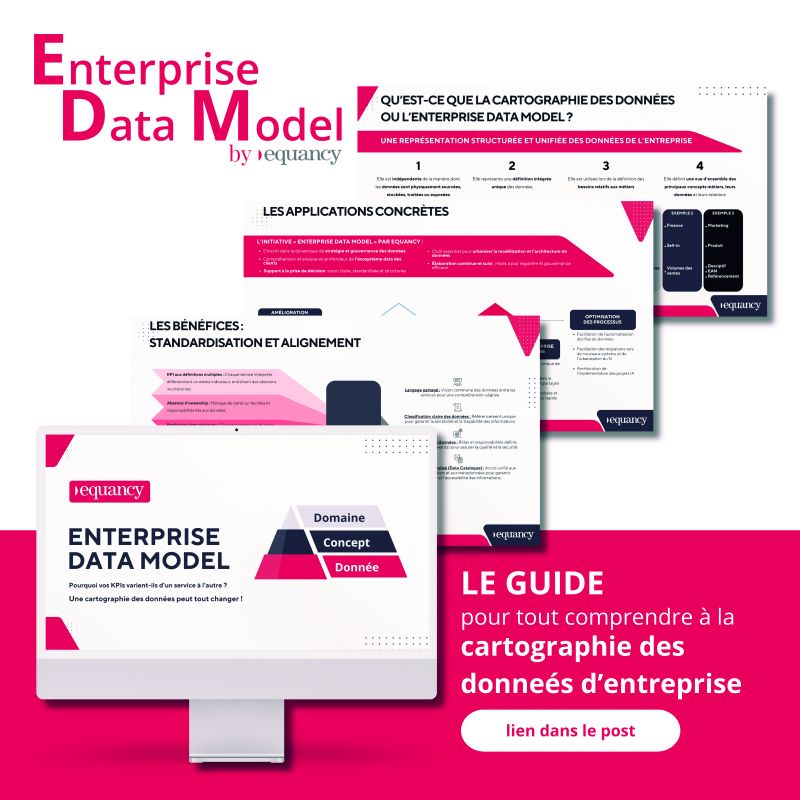Customer Experience and Brand Image in the Age of Metavers
What is the metaverse?
Many see it as a shift from text-based websites and closed ecosystems to open, interoperable 3D environments where users interact through avatars. The metaverse is often associated with virtual or augmented reality; these are essential means of discovering and exploring 3D worlds. However, the metaverse is far from being confined to this type of medium. The majority of current iterations of metavers are accessible on computers or smartphones. Another aspect often highlighted is composability: the possibility of finding one's avatar, certain items or objects by migrating from platform to platform, bringing about this notion of a second digital identity. Travis Scott's concert in Fortnite in 2020, with a total of more than 27 million participants, is a tangible illustration of this. The famous video game platform created the event by offering a live music concert, with a real artist, represented by his avatar, performing in front of a virtual crowd of real players.
Tools such as Zoom or Teams can also be seen as light forms of metavers; virtual environments where users exchange and collaborate, often represented by their own faces through their webcams. While this explanation includes the elements that explain the current trend (3D, VR, etc.), it reduces the metaverse to the simple gain of a dimension in the representation of the internet, and excludes any deeper reason for the existence of this phenomenon. The French Academy defines identity as the character of what remains identical and permanent in a being, the foundation of its individuality. Under this prism, the metaverse becomes the metaphysical support for all our digital interactions, most of which are indelible and persistent. It is the place where our second digital identity manifests itself. Under this less restrictive definition, a good number of digital media that allow us to express our individuality are part of the metaverse, notably social networks. It is this mix of virtual experiences and real-world connection that best represents the metaverse. It is this mix of virtual experiences and links to the real world that best represents the meta-verse, and above all it is the one that attracts the attention of brands looking for new communication channels and new experiences to offer.
NFT & Metavers : What are NFT'S and what role do they play in the metaverse ?
Alongside the metaverse craze, 2021 has also seen an explosion in the popularity of NFTs, a crucial technological building block for evolving the metaverse into what it aspires to be: a constellation of interconnected, content-rich "micro-universes". NFTs or non-fungible tokens share the same decentralised infrastructure as cryptocurrencies. They are a new form of digital property, native to the internet and registered on the decentralised public register as the blockchain (a public blockchain has a decentralised consensus mechanism, which is the only way to guarantee real disintermediation, unlike private corporate blockchains, which have very few advantages in absolute terms). Markets cannot operate without real and clearly defined property rights: in the case of digital works, it is impossible to differentiate the owner of a work from someone who owns a copy. To buy something, you need to know who has the right to sell it, and you need to be able to transfer that ownership from the seller to the buyer, ideally without having to rely on a trusted third party. NFTs solve this problem by providing stakeholders with an object that they can accept as proof of legitimate ownership. In addition, the programmability of NFTs can make the owner an investor, club member, brand shareholder and participant in a loyalty programme. Ultimately, non-fungible tokens make it possible to create a market built around new forms of transactions, allowing the exchange of products that could not previously be sold.
WEB 3, The beginning of a new era : what implications for the metaverse ?
Another way of looking at this innovation in the materialisation of the internet is to take a step back and look at the major stages that have shaped the web today. In the early days of the internet, content creation was the exclusive domain of a limited number of players, often content creators outside the internet, such as the press. The first major transition occurred in the mid-2000s with the arrival of Web 2.0: that is, Facebook, YouTube, social networks and the participatory web. The main marker of this transition is the rise of UGC (user generated content): The Times pays journalists and editors to populate its website with content, while Facebook relies on its users to enrich its platform on a (often) voluntary basis. The adoption of Web2 has greatly benefited from the democratisation of publishing power on the internet and network effects, giving a boost to the development of GAFAM, now valued at 8.7 trillion dollars, more than 3 times the CAC40. Nevertheless, the redistribution of this value remains limited or even absent from the economic models of web platforms2 : remuneration subject to conditions that can vary from one year to the next on YouTube, self-gratification in likes and perceived popularity on social networks, exploitation of user data without compensation... Web3 aims to make the user an actor and agent of the platforms with which he interacts: web1 facilitated the distribution of content on the internet, web2 made the power of publication accessible to all and gave rise to the creation economy, web3 intends to reassign the ownership of content to the users of the platforms, giving rise to the era of "User Owned Content". This change in approach can be a powerful catalyst for generating engagement, particularly by addressing the weaknesses of web2 in terms of data sovereignty and portability, and above all in terms of mechanisms for accumulating and redistributing value.
The challenges of WEB 3 pioneer brands and the metaverse :
Although the web3 metaverse is still in its infancy and the underlying technologies are not yet mature (blockchain and hardware enabling exploration of the metaverse), the most daring brands are already engaged in strategies for a presence in the metaverse. Their motivation: a set of business objectives that can be achieved thanks to web3 innovations.
Firstly, it is a question of responding to the main causes of failure of customer communities: profit-seeking above all, lack of vocation, lack of advantages and levers of animation, lack of participation... The metaverse, through the atomicity of micro-universes and the general portability and interoperability, makes it possible to have extremely complete and customisable spaces. Platforms built on the web3 , whether they are simple applications or advanced metavers, benefit natively from an exchange network and an integrated monetary system. This creates a multitude of new animation levers and makes communities more attractive. Developers no longer have to build systems capable of managing exchanges and transactions between members of their communities, nor do they have to call on a third party for this service. Indeed, the first use case of blockchains is precisely to be a vector of disintermediation, and to provide a public infrastructure capable of managing transactions in a decentralised manner. Another advantage, linked to the programmable aspect of blockchains, is the possibility of orchestrating and aligning the motivations of stakeholders through an advanced intra-community economy. The creators of web-based communities3 benefit from a set of tools and mechanisms that can catalyse member participation. Through incentives (financial or not), which have the particularity of being automatable, they can free themselves from any need of trust: code is law, what is written in the code is authoritative. As each interaction within these ecosystems takes the form of a public transaction, broadcast to the four corners of the globe, this makes the measurability of the performance of these communities open to all. Engagement thus becomes a communication in itself. Finally, the communities built around web3 will constitute a new age of customer maturity: beyond inclusion and co-creation, web3 users will not be part of the organisation, they WILL be the organisation, will benefit from a power of governance thanks to on-chain voting (voting anchored on the blockchain), and will have a direct right of ownership over the content they create, buy or receive as a reward. As relational branding is a response to consumer mistrust, the need for dialogue, and more recently the regression of post-covid social ties, it will be appropriate to base its relationship on a transparent, decentralised, open, permissionless, trustless and censorship-resistant infrastructure.
How brands stand out in the metaverse today
From the most cautious to the most innovative, there are several strategies for presence in the metaverse. A first approach would be through Roblox, a platform where players and "experience creators" meet. Roblox provides its content creators with an assortment of free tools that allow them to design experiences, games and 3D spaces, choose a business model (free-to-play, subscription or one-off payment) and offer these experiences to the entire Roblox community. Created in 2006, the platform had no less than 55 million daily active users in February, millions of playable experiences and, in the United States, 3 out of 4 children between 9 and 12 years old play Roblox. This is a very attractive audience for brands that are always looking for new ways to interact with their audiences. In November 2021, Nike is launching Nikeland, a space within Roblox that mirrors its headquarters. Including a number of activities and mini-games, the digital showroom allows players to dress up their avatars with the brand's products, and offers a set of in-play moments emulating real-world sporting events (e.g. football-related activities during the 2022 World Cup in Qatar). The aim is clear: to engage its community as early as possible, experiment with new products, and enable co-creation. Other brands have copied Nike's model: Vans, Chipotle, Ralph Lauren, NASCAR or Gucci have virtual worlds in Roblox similar to Nikeland.
Deploying its metaverse through Roblox has the advantage of being relatively easy to set up: it is easier for Nike to coordinate its launch with a single central entity (Roblox) than to engage with a community as a whole. Unlike web3 metavers, Roblox is a walled garden, built on a centralised infrastructure, where all interactions take place within the company's servers. Although metavers does not necessarily mean blockchain, it is a safe bet that the metavers of the future will be powered by a decentralised financial infrastructure.
Enter The Sandbox, a platform similar to Roblox in many ways, but with the particularity of being based on the Ethereum blockchain. In The Sandbox, all in-game assets take the form of NFTs: each item in the game benefits from the programmable rarity of non-fungible tokens. In parallel to these NFTs representing unique objects, The Sandbox uses a token (fungible this time), SAND, fulfilling several roles within the platform: a medium of exchange for in-game transactions, a vehicle for redirecting part of the value created to the community, and a mode of governance for content curation. Despite the challenge of adapting to the codes of web3, many brands have formed partnerships or established themselves via The Sandbox. Among those who have taken the plunge are Adidas, which has launched a similar initiative at Nikeland, Warner Music Group, which has created a hybrid space dedicated to music halfway between a theme park and a virtual concert hall, and Havas, Ubisoft, Carrefour, Axa, Samsung, HSBC and PwC, which have all acquired plots of land on The Sandbox (the platform is preparing to raise $400 million for an estimated valuation of $4 billion).
The web3, an open environment by definition, also allows brands to use blockchain innovations to offer new experiences and services. A sneaker manufacturer can market its limited collections as NFTs, allowing communities of sneakerheads to speculate and trade products with each other (in this case, digital title deeds) without having to mobilise international transport logistics and with the promise that the manufacturer of the pair will exchange the NFT for a physical pair for the end buyer. Moreover, the manufacturer can capture new revenue streams thanks to the programmability of NFTs, for example by including in the logic of the token a percentage of royalties on successive resales: in December 2021, Nike bought the design studio RTFKT, which became known for its digital sneakers. NFTs are a new lever for maintaining a strong link between brands and customers whose purchases are spaced out over time. A car manufacturer can give the buyer an NFT with the characteristics and configuration of the vehicle. This NFT can then take on the role of a pass, entitling its holder to certain exclusive advantages. It can also act as a real maintenance booklet, where each intervention on the vehicle is documented and recorded on the blockchain, bringing real added value to the secondary market and helping to limit the asymmetry of information between buyers and sellers: in February 2022, Alfa Romeo announced that its next SUV would be delivered with a unique NFT that would follow it throughout its life. The GAMAMs [ex GAFAMs - sic], whose hegemony is not yet threatened by the web3 , have also launched their initiatives to appropriate the metaverse: apart from Facebook's rebranding as Meta and its $10 billion investment to develop the industry, we can note Microsoft's purchase of Activision in January 2022 for $68.7 billion, indicating a desire to use gaming as a gateway into the metaverse.
Bloomberg estimates the potential revenue opportunity of the metaverse at $800 billion, as early as 2024. This impressive figure, however, hides a set of challenges that web3 will have to face before it really becomes the missing technological brick in the advent of the metaverse as we imagine it. Between the risks linked to regulatory compliance and the major challenge of onboarding new users, for whom web3 is a real paradigm shift, it is difficult to give a deadline for the realisation of a decentralised and open vision of the web. Added to these difficulties is the scarcity of skills required in companies to succeed in their strategies for a presence in the metaverse. Skills that would allow them to truly embrace the ethos of the crypto and web3 communities as a whole. Despite this, pioneering brands, attracted by the first-mover bonus, are vying to take over the codes of the metaverse for some, or to invest deeply in what is perceived as the internet of tomorrow for others.




